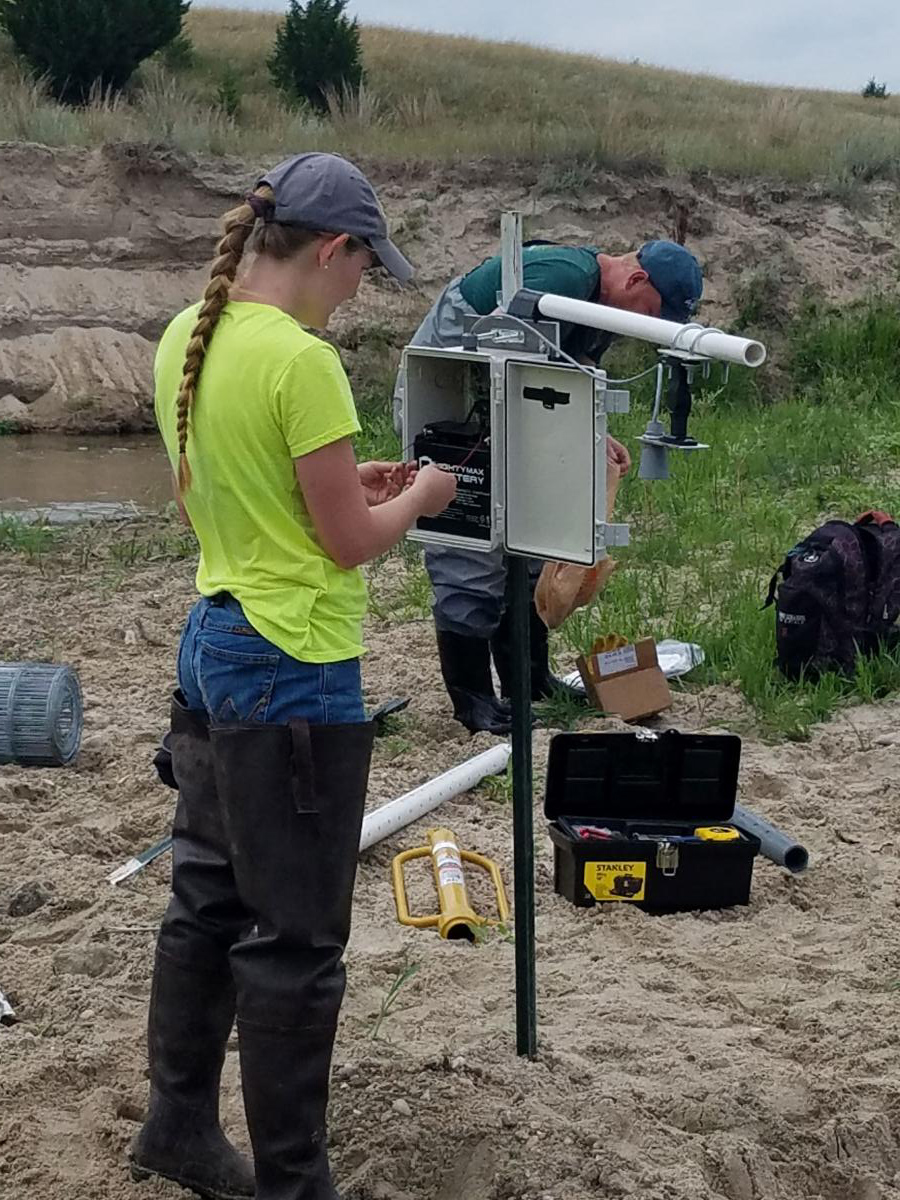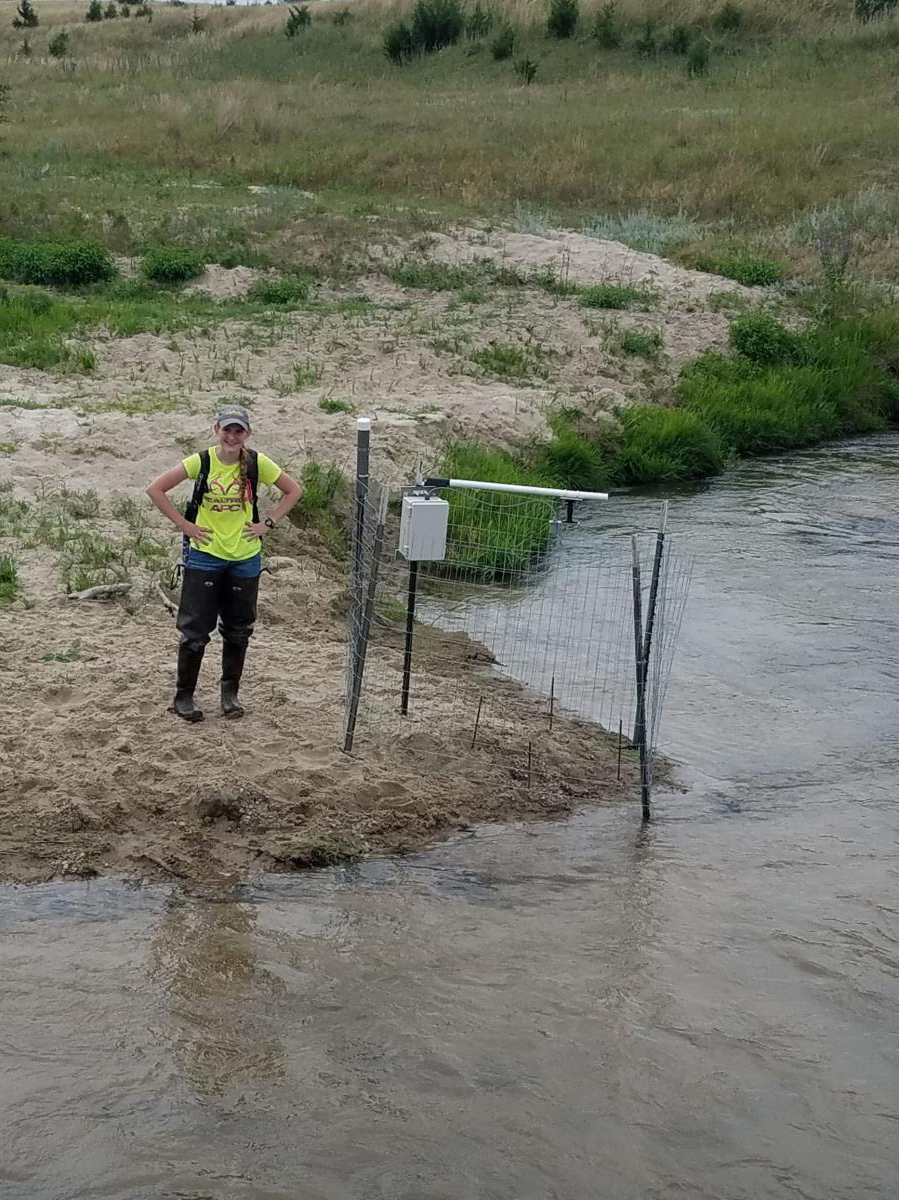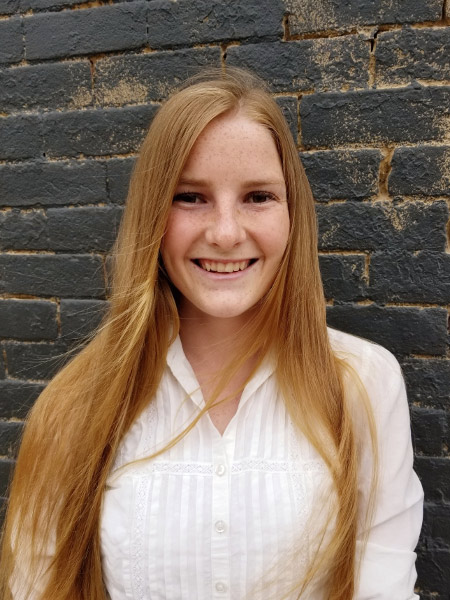Monitoring resilience of waterways—and oneself!
Designing and testing new equipment for monitoring erosion and deposition proved exciting for NRT engineering student Jessie Johnson as she faced floods, high temperatures, humidity and curious cows.
For her master’s project, Johnson and her advisor, Aaron Mittelstet, sought a better way to monitor erosion in agricultural lands and along streambanks since soil can hold phosphorous and other contaminants that pollute water and since soil loss can damage infrastructure.
“Most of the traditional ways of monitoring erosion—along streambeds or in crop fields—are expensive to get the quality data that is drawn from frequent, very precise measurements,” Johnson said. “A nonexpensive way would be to insert a pin in the bank and measure how much is exposed over time, but you only get a measurement when you go to the field.”

The monitoring system she tested gave frequent measurements and was affordable and noninvasive. It consisted of electronics, a battery and an ultrasonic sensor mounted on a pole on the streambank across from the site being monitored. It used ultrasonic soundwaves to monitor the distance from the sensor to the area of interest. Johnson calculated the amount of erosion through a set time and obtained a rate.
The system worked well in the lab, measuring within a millimeter of accuracy, but it measured anywhere from one to two centimeters of accuracy in the field, she said.
“There are a lot of factors that influence soundwaves as they travel through the air,” she said. “Temperature and humidity impact how fast the soundwaves move, and that can impact how long it takes for the signal to be sent and received, which can impact the distance recorded.”
She tried fixing this problem by adding a temperature probe to the system to correct the speed of sound for the air temperature outside, but she has not been able to correct for relative humidity yet.
And then she encountered floods.
Her site near Valentine in the Middle Niobrara Natural Resource District received two heavy rains in one week.
“My erosion monitoring system was on the bank, but there was so much water that the whole thing got flooded,” she said. “I was able to retrieve all the data, but the system doesn’t work anymore.”
And then she encountered cows . . . roaming freely at sites in pastureland.
Johnson and her advisor recognized the damage cows could do if they rubbed against the monitoring equipment, so they put a wire fence around it. This led to further complications.

“The fences actually influenced the deposition we saw because debris would catch on the fence and then that would change the flow that was going over the area we were looking at, and so, there were spots with a lot of deposition and others with none because it would pool around the debris on the fence,” Johnson said.
Looking back, she offered ideas about how to address bovine-induced challenges.
“In the future, if you used this monitoring system, you could work with the rotations farmers use in their pastures,” she said. “Maybe set the system up while the cattle aren’t there and put the fence up only when they need to be there.”
While the system has limitations, Johnson noted its advantages over other systems and said she valued the chance to work on it.
“I feel like I have really been getting to do engineering,” she said. “It’s like, ‘Here’s this design,’ and I’ve really been improving and testing the design. It’s different from some people’s master’s that are maybe a little more theoretical-based. I feel this has been really application-based, and I have been enjoying that.”
She said she also appreciated having a field element as part of her master’s project because she grew up in rural Colorado with a twin brother and an older brother and always enjoyed spending time outdoors with them and her father.
“I have always been outdoors hunting and fishing, enjoying what the environment has to offer, so just knowing that I could do something that could help maintain the environment and make it so people could use it without it getting totally trashed is worthwhile,” she said.
Her ultimate goal now is to use her engineering degree to manage water resources in Nebraska, she said.
“I’m interested in solving problems in managing the quantity and quality of our water,” she said. “I think my master’s research has helped prepare me to do that and tackle challenges in the field.”
Even those mobile challenges that moo.
— Ronica Stromberg, National Research Traineeship Program Coordinator



